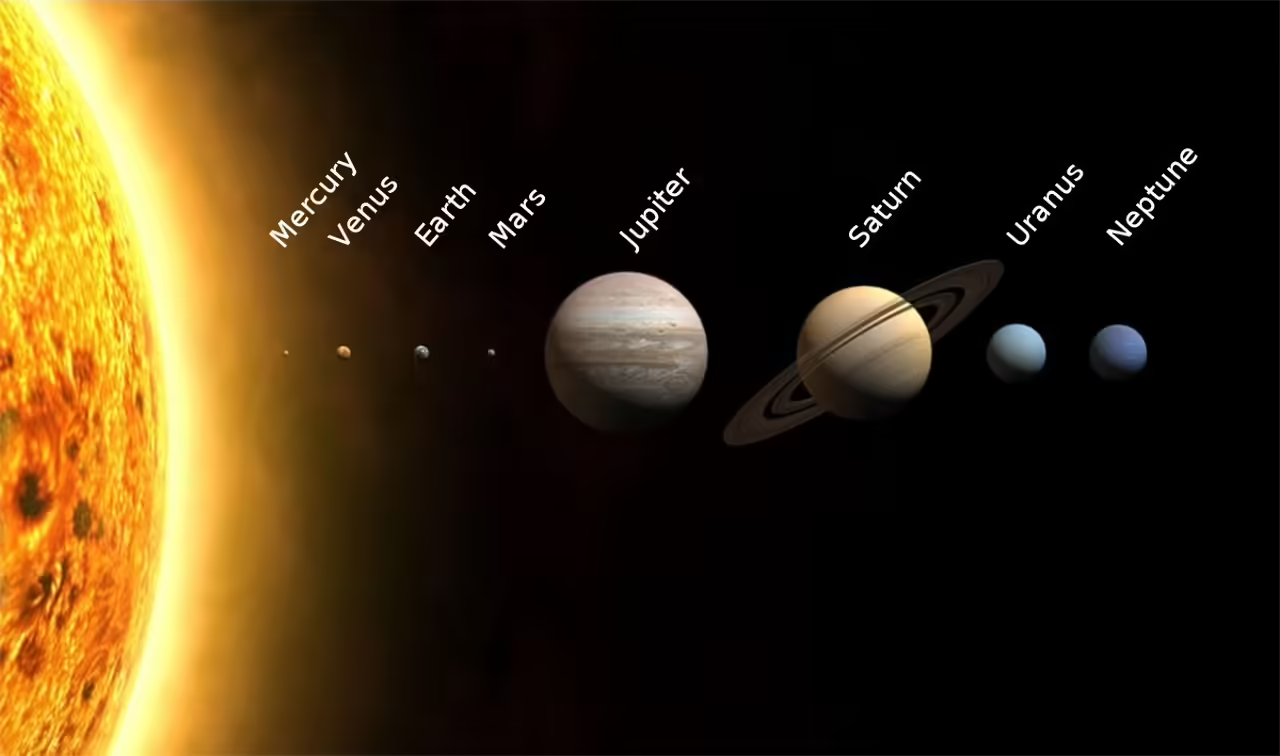
The Mercury paradox is an intriguing phenomenon that refers to the extreme temperatures recorded on the planet Mercury, the closest planet to the Sun in our solar system. Despite being located closer to the Sun than any other planet, Mercury has a surprising combination of extremely high and extremely low temperatures on its surface.
During the day, when Mercury is closest to the Sun, temperatures on its surface can reach up to 430 degrees Celsius (800 degrees Fahrenheit). This is because Mercury has no significant atmosphere to retain heat, allowing solar energy to impinge directly on its surface. In addition, the extreme proximity to the Sun contributes to additional heating.
What is even more puzzling, however, is that temperatures on Mercury can drop dramatically at night. During the night, as the planet moves away from the Sun, temperatures can drop to approximately -180 degrees Celsius (-290 degrees Fahrenheit). This is an extreme temperature difference between day and night, which is not easily explained due to the lack of a significant atmosphere.
The paradox lies in the fact that, although Mercury is much closer to the Sun and receives a large amount of solar radiation, its nighttime temperature is much cooler than would be expected based on its location and solar exposure. This discrepancy poses a scientific conundrum and has led to several theories to explain it.
One possible explanation for this paradox is that Mercury’s surface, composed mostly of rocks and minerals, may have a surprisingly high heat retention capacity. This means that, despite the lack of an atmosphere to retain daytime heat, the surface can accumulate heat during the day and release it very slowly during the night, resulting in cooler than expected nighttime temperatures.
In addition, the lack of a dense atmosphere on Mercury also means that there is no significant greenhouse effect that can trap heat at the surface and smooth out temperature differences. Thermal radiation is rapidly scattered into the vacuum of space, which contributes to the extreme temperatures both day and night.
The Mercury paradox continues to be studied and explored by scientists. Space missions such as NASA’s MESSENGER probe have provided crucial data on Mercury’s tenuous atmosphere, the composition of its surface, and features that could contribute to this paradox. As more data are collected and additional research is conducted, we hope to gain a more complete understanding of this enigma and the forces shaping Mercury’s extreme climate.
Proximity to the sun: why doesn’t Mercury warm significantly?
Although Mercury is extremely close to the Sun, it does not warm significantly due to several key factors:
Lack of atmosphere: Mercury has a very thin and almost non-existent atmosphere. Unlike Earth, which has a dense atmosphere that can retain heat, there is no substantial gaseous layer on Mercury that can act as a thermal insulator. As a result, solar radiation reaches the surface directly and quickly escapes into space without being retained.
Slow rotation: Mercury has an extremely slow rotation compared to its orbit around the Sun. A day on Mercury (the time it takes to complete one rotation) lasts approximately 59 Earth days. This slow rotation means that one side of Mercury is exposed to the Sun for an extended period of time before the other side faces the Sun. As a result, the planet’s surface is heated unevenly and it takes a long time to transfer and balance the heat.
Absence of greenhouse effect: Unlike Venus, which has a dense atmosphere composed mainly of carbon dioxide, Mercury lacks atmospheric gases that could generate a greenhouse effect. On Earth, the greenhouse effect traps some of the sun’s heat in the atmosphere, which contributes to global warming. On Mercury, however, there are no gases to trap heat, allowing it to escape rapidly into space.
Thermal regulation: Despite its lack of atmosphere and low heat retention, Mercury’s surface can accumulate heat during the day due to direct solar radiation. However, due to its slow rotation and lack of efficient heat conduction on its surface, heat is gradually dissipated during the night and released into space. This results in the drastic temperature differences between day and night on the planet.
These combined factors explain why Mercury, despite its proximity to the Sun, does not heat up significantly. The lack of a substantial atmosphere, slow rotation and the absence of a greenhouse effect contribute to the extreme temperatures on its surface, with intense heat during the day and extreme cold at night.
Endless days and nights: The influence of Mercury’s slow rotation on its temperature
Mercury’s slow rotation plays a crucial role in generating endless days and nights on the planet, which in turn has a significant impact on its temperature.
Due to its highly elliptical orbit and long rotation period, Mercury experiences a 3:2 orbital resonance with respect to the Sun. This means that the planet makes three revolutions around its axis for every two complete orbits around the Sun. As a result, a day on Mercury, i.e., the time it takes the planet to complete one rotation on its axis, lasts approximately 59 Earth days.
This slow rotation has important implications for the distribution of heat on Mercury’s surface. When a region of Mercury faces the Sun during its long day, direct solar radiation strikes that region for an extended period of time. This causes significant heating and can raise the surface temperature to extremely high levels.
On the other hand, during the Mercurian night, the region of the planet that is far from the Sun is plunged into darkness for an equally prolonged period. Without the presence of a substantial atmosphere to retain heat, thermal radiation is rapidly dissipated into space, and the surface cools rapidly. This results in extremely cold nighttime temperatures.
The combination of a prolonged day and a prolonged night on Mercury contributes to the extreme temperature differences between the two periods. During the day, when the region is exposed to the Sun, temperatures can reach up to 430 degrees Celsius (800 degrees Fahrenheit). However, during the night, temperatures can drop to approximately -180 degrees Celsius (-290 degrees Fahrenheit).
This alternation between endless days and nights also generates a strong contraction and expansion of Mercury’s surface due to the extreme heat and intense cold. This phenomenon has been observed and studied by radar measurements from Earth and through space missions, such as NASA’s MESSENGER probe.
The Polar Crater Trap: Perpetual Shadow Zones and their impact on Mercury’s temperature
Perpetual shadow zones in Mercury’s polar craters play an important role in the planet’s temperature. These shaded regions at Mercury’s poles never receive direct sunlight, resulting in extremely cold temperatures and freezing conditions.
At Mercury’s north and south poles, there are deep, narrow craters that act as perpetual shadow traps. These craters are so deep that sunlight cannot reach them due to the planet’s axial tilt and surrounding topography. As a result, these areas remain permanently in darkness, without experiencing direct solar radiation.
Due to the lack of direct solar radiation in the perpetual shadow zones, temperatures in these craters can be extremely cold. It has been estimated that temperatures in these regions can drop to -200 degrees Celsius (-328 degrees Fahrenheit) or even lower. The low temperatures allow water ice and other volatile compounds to accumulate and be preserved in a solid state in these areas.
The presence of ice in Mercury’s polar craters is a significant discovery. This ice is believed to come from a variety of sources, such as falling comets and water-rich meteorites, and possible internal production of water through chemical processes on the planet’s surface.
The existence of these perpetual shadow zones and ice at the poles of Mercury have important implications for understanding the planet and its features. These regions act as reservoirs of frozen volatiles, and their study can provide valuable information about the history of water and other compounds on the planet.
The presence of ice in polar craters has implications for future space missions and human exploration. Water ice may be a valuable source of resources, such as drinking water and rocket fuel, on future space missions to Mercury or as a starting point for more distant travel in the solar system.
The solar wind and its influence: How solar wind radiation and pressure affect Mercury’s temperature
The solar wind, a stream of charged particles expelled by the Sun, also plays an important role in influencing Mercury’s temperature. Although Mercury has a very thin atmosphere, the solar wind can have significant effects on its space environment and surface temperature.
The solar wind consists mainly of electrons and protons that are emitted by the solar corona at high velocities. These charged particles interact with Mercury’s environment in several ways:
Radiation: Charged particles from the solar wind can interact with Mercury’s surface and cause radiation processes. When the particles impact the surface, they can release energy in the form of radiation, which contributes to global warming. This effect is most noticeable in regions near Mercury’s equator, where the solar wind particle flux is most intense.
Solar wind pressure: In addition to radiation, the pressure exerted by the solar wind can also influence Mercury’s temperature. Although Mercury has relatively weak gravity due to its small size, the solar wind can exert significant pressure on its thin atmosphere and exosphere. This pressure can affect the distribution of gases in the atmosphere and thus have an impact on the surface temperature.
However, it is important to note that due to Mercury’s tenuous atmosphere and its proximity to the Sun, the direct influence of the solar wind on the planet’s temperature is limited compared to other factors, such as the lack of a dense atmosphere and slow rotation.
It is necessary to keep in mind that Mercury’s temperature is mainly determined by direct solar radiation during the day and rapid heat dissipation during the night due to the lack of atmospheric retention. The solar wind can affect the distribution of gases in the atmosphere and have an indirect impact on temperature, but its influence is secondary to other factors.







